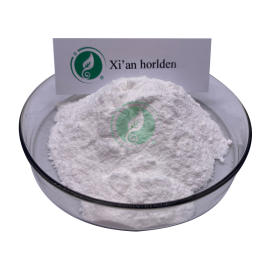-
Categories
-
Pharmaceutical Intermediates
-
Active Pharmaceutical Ingredients
-
Food Additives
- Industrial Coatings
- Agrochemicals
- Dyes and Pigments
- Surfactant
- Flavors and Fragrances
- Chemical Reagents
- Catalyst and Auxiliary
- Natural Products
- Inorganic Chemistry
-
Organic Chemistry
-
Biochemical Engineering
- Analytical Chemistry
- Cosmetic Ingredient
-
Pharmaceutical Intermediates
Promotion
ECHEMI Mall
Wholesale
Weekly Price
Exhibition
News
-
Trade Service
□ Chen Meng Guangdong Institute of Petrochemical Technology
Abstract: In today's rapid development era, food safety issues are increasingly concerned by consumers.
Keywords: food additives, food safety testing
1 Introduction to food additives
Food additives refer to chemically synthesized or natural substances added to food to improve the quality and color, aroma and taste of food, and to meet the needs of anti-corrosion, preservation and processing technology [1].
2 The main functions of food additives
The main functions of food additives can be roughly divided into five categories: ① prevent food spoilage and deterioration; ② improve and improve the sensory properties of food; ③ maintain or increase the nutritional value of food and promote nutritional balance; ④ facilitate food processing and improve the operability of food processing Sex; ⑤ to meet other special needs of special groups of people [2].
3 Limitations of food additives
3.
In order to achieve a certain purpose, some businesses will add additives that do not meet legal requirements during food production and processing.
3.
Smoked meat products are often prone to excessive use of color-preserving agents, such as nitrate and nitrite, and the N-nitroso compounds formed by combining with the protein in meat products have carcinogenic effects; preserved fruit products will be sweetened Excessive use of the drug results in a higher sugar content in the product, which is not friendly to people who are not suitable to consume too much sugar.
3.
According to the requirements of national standards, prepackaged foods must be marked with raw material ingredients in easily noticeable locations on the outer packaging, including the amount of additives used [3].
3.
Food safety risk assessment refers to the scientific assessment of substances in food and food additives that may be harmful to the human body and cause adverse effects, including hazard identification, hazard feature description, risk feature description, etc.
4 How to avoid the risks brought by food additives
4.
Because food additives are not directly consumed by consumers, but are added to food through compound processing [5], the amount and scope of use of food additives are regulated by relevant standards.
4.
The traditional supervision model has problems such as multi-departmental overlap, decentralization of power, lack of effective control methods, and the lack of effective communication and exchanges between various departments, which makes it difficult to improve the quality of supervision, resulting in weak law enforcement by the supervision department and lack of authority in the minds of the masses.
4.
First of all, the relevant departments should conduct systematic and scientific training for the staff of the testing agency, so that they can have a deep understanding of the food production process and processing technology, and learn the food standard laws and regulations, including standards, national announcements, etc.
, such as the "National Food Safety Standard Pre-Packaging" General Principles for Food Labeling (GB 7718-2011), National Food Safety Standards for the Use of Food Additives (GB 2760-2014), and List of Non-edible Substances and Food Additives Easily Contained in Foods That May Be illegally Added, etc.
Improve their business level and professional quality, and then adhere to the scientific, fair and efficient inspection work.
Secondly, it is necessary to improve the comprehensive quality level and management ability of producers, cultivate food safety awareness and service awareness, and ensure the safety of the food production line.
4.
4 Organize the risk assessment of food additives and formulate a risk management system
The food additive risk assessment system can be constructed to deal with and solve the problems in food production in a timely manner, realize the whole process management and monitoring of food production, and better control the application of food additives.
Food production includes raw material collection, process production, transportation and storage and many other aspects, covering a wide range.
It is far from enough to rely solely on the management of the food inspection department.
It is also necessary to make full use of the power of related systems, learn from better technologies and systems, and combine reality Develop a practical and feasible risk management system, strictly implement the management system and operating procedures, improve production levels, update equipment and facilities, create a good processing quality supervision environment, and create a food production and processing process that meets the requirements.
5 Conclusion
Food safety is no small matter.
The wide application of food additives not only makes the types of food more diversified, but also helps improve the quality of products and enrich people's lives.
However, the hidden food safety hazards cannot be ignored.
It is necessary to strictly regulate the use of food additives, pay attention to food safety issues , and treat the use of food additives correctly, so as to protect the people's food safety.
references:
[1] Wang Shuai.
The origin of food additives and the limitations of Chinese food additives[J].
Chemical Management.
2020.
04.
077.
[2] Sun Yan.
Research on the relationship between food additives and food safety[J].
"Food Safety Guide".
2019.
35.
044.
[3] Tan Xinxin.
How to improve the quality of food additives inspection[J].
"Food Safety Guide".
2020.
06.
033.
[4] Yang Xinquan, Tian Hongyu, Chen Zhaobo, etc.
Research status and development trend of food additives[J].
Advances in Biotechnology.
2011.
1(05):305-311.
[5] Zhang Chi.
Some thoughts on constructing the quality and safety management system of food additive enterprises[J].
Food Safety Guide.
2020.
27.
062.
About the author: Chen Meng (1993-), female, bachelor's degree, assistant experimenter, mainly engaged in laboratory safety management, food quality and safety management research.







